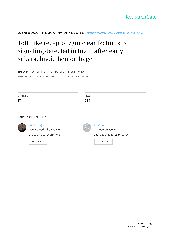摘要
Background Inflammation and immunity play a vital role in the pathogenesis of early brain injury after subarachnoid hemorrhage (SAH). Nuclear factor-kappa B (NF-kappa B) regulates many genes essential for inflammation and immunity and is activated by toll-like receptor (TLR). This study aimed to detect the expression of the toll-like receptor 4/nuclear factor-kappa B (TLR4/NF-kappa B) signaling in the rat brain after early SAH. @@@ Methods The rats were decapitated and their brains were removed at 0, 2, 4, 6, 12, 24 and 48 hours after a single injection of blood into the prechiasmatic cistern. mRNA expression of TLR4 was measured by Taqman real-time RT-PCR, and protein expression by immunchistochemistry and Western blotting. NF-kappa B activity and concentrations of tumor necrosis factor-alpha (TNF-alpha), interleukin-1 beta (IL-1 beta) and interleukin-6 (IL-6) were measured by enzyme-linked immunosorbent assay (ELISA). @@@ Results TaqMan real-time RT-PCR and Western blotting identified a biphasic change in TLR4 expression in both mRNA and protein: an initial peak (2-6 hours) and a sustained elevation (12-48 hours). Immunohistochemical staining showed the inducible expression of TLR4-like immunoreactions predominantly in glial cells and vascular endothelium. A similar biphasic change in the activation of NF-kappa 13 subunit p65 as well as the production of NF-kappa B-regulated proinflammatory cytokines (TNF-alpha, IL-1 beta and IL-6) were detected by ELISA. @@@ Conclusions These data suggest that experimental SAH induces significant up-regulation of TLR4 expression and the NF-kappa B signaling in early brain injury. Activation of the TLR4/NF-kappa B signaling may regulate the inflammatory responses after SAH. Chin Med J 2009;122(13):1575-1581
- 出版日期2009-7-5
- 单位四川大学
